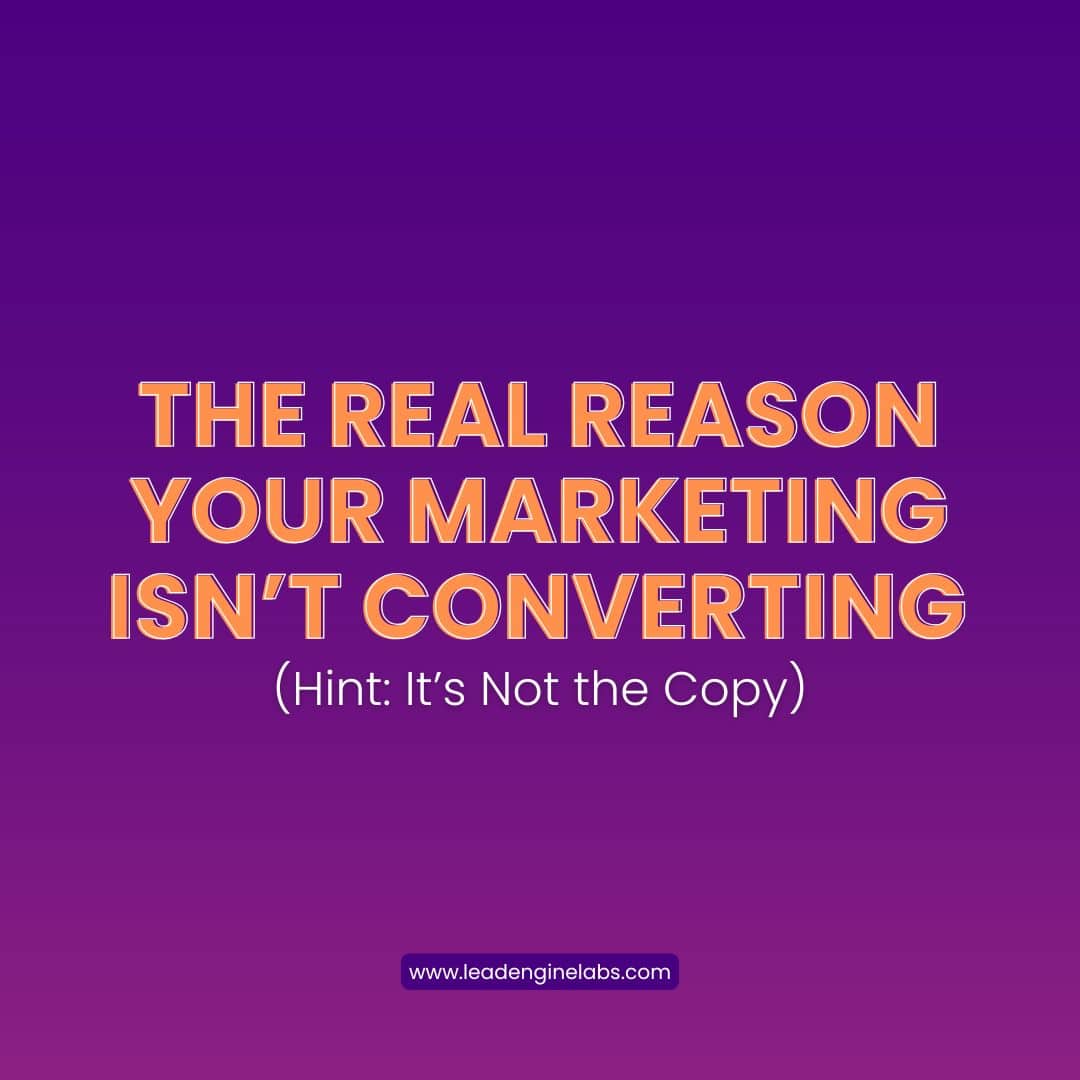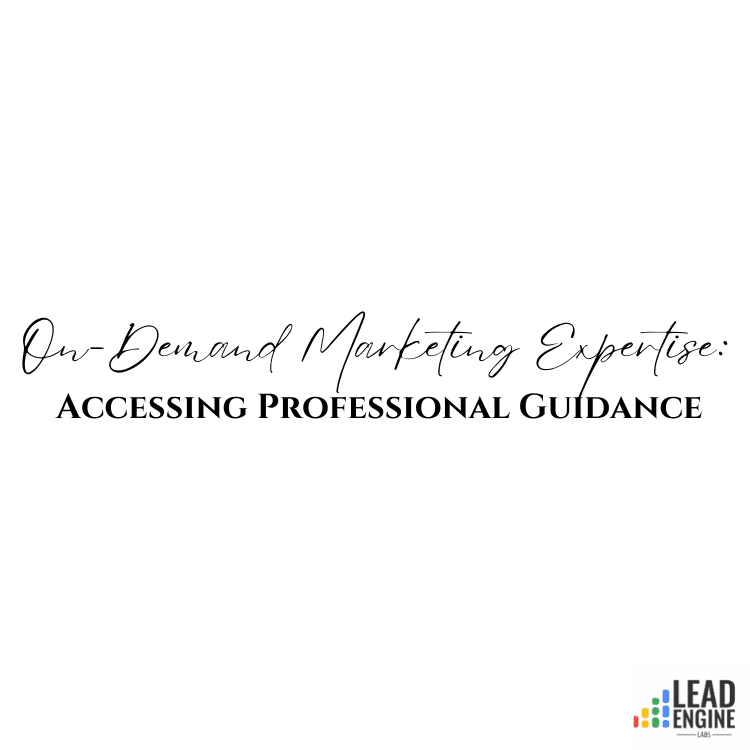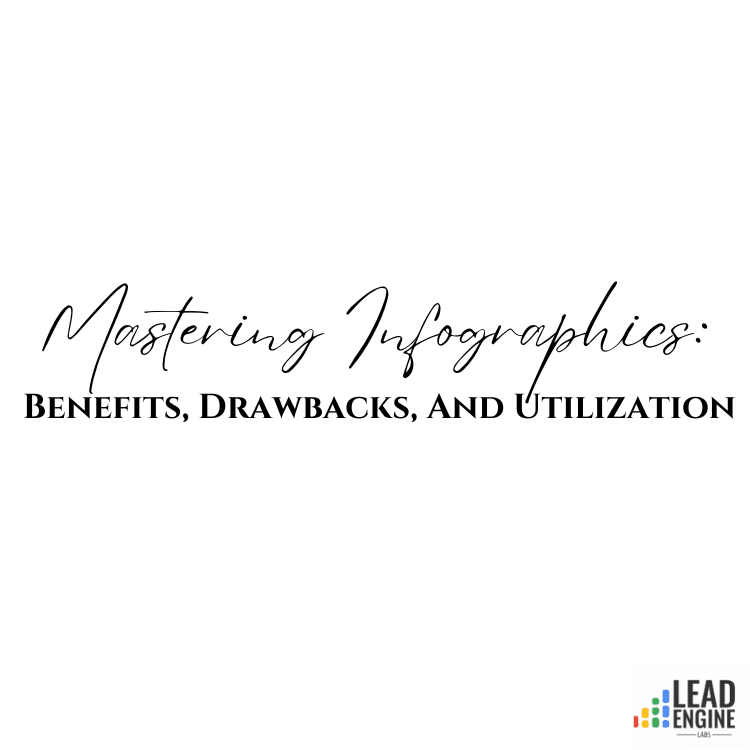Your ads look sharp. Your emails are grammatically flawless. Your landing pages read well.
But conversions? Flat.
So you rewrite the copy. Again. And again. And again.
But here’s the truth: if your marketing isn’t converting, copy is rarely the root problem.
Conversions are downstream of positioning, timing, offer strength, and context. Copy just delivers the message. If that message is misaligned or meaningless, no amount of wordsmithing will save it.
This post is about what’s really killing your performance—and how to fix it.
Cold Outreach Isn’t Dead—You’re Just Doing It Wrong
The Symptom vs. The Source
Bad copy is a symptom.
But in most cases, it’s covering for something deeper:
- A vague offer that doesn’t feel urgent
- Targeting the wrong stage of awareness
- Misaligned message-to-market fit
- Friction between the problem you solve and the way you’re presenting it
You don’t need a better hook. You need a better reason to respond.
Root Cause #1: You’re Selling the Tool, Not the Outcome
This is the most common problem in B2B.
You talk about the product—features, integrations, dashboards.
But buyers don’t care about tools. They care about the shift you enable.
Examples of tool-speak:
- “We help sales teams streamline their CRM.”
- “Our platform automates your prospecting workflow.”
Outcome-first reframes:
- “Your reps waste 6+ hours/week doing manual CRM admin. We give that time back.”
- “We cut your outbound effort in half—without sacrificing pipeline.”
The shift sells. Not the software.
Root Cause #2: You’re Speaking to the Wrong Stage of Awareness
Most B2B content assumes the audience knows they have a problem.
They don’t.
Or if they do, they may not yet believe it’s urgent—or worth changing.
There are 5 levels of awareness:
- Unaware
- Problem aware
- Solution aware
- Product aware
- Most aware
If your messaging is built for product-aware prospects, but your traffic is mostly problem-aware… you lose.
Example:
You run ads saying, “Book a demo today,” but your audience isn’t even sure they need what you do. They need education—not a CTA.
Fix:
Match the message to the stage. Build content and campaigns that guide people forward—don’t jump ahead.
Root Cause #3: The Offer Isn’t Clear or Compelling
Your offer is the conversion magnet. If it’s weak, everything collapses.
Bad offers:
- Ask too much too soon (e.g., book a call before showing value)
- Are too vague (e.g., “Let’s connect”)
- Don’t feel different from anything else in the market
Strong offers:
- Are specific (“Audit your funnel in 48 hours, no strings attached”)
- Are low friction
- Deliver quick wins or new insights
- Create contrast against the status quo
Ask yourself:
Would you respond to your own offer? If not, it’s not a copy issue. It’s an offer issue.
Root Cause #4: You’re Guessing What the Market Wants
Most teams write marketing based on what they think sounds good.
The best teams write based on what the market is already saying.
Fix this with feedback loops:
- Interview salespeople weekly
- Run surveys to recent leads and customers
- Listen to sales call recordings
- Hang out in dark funnel channels (Slack groups, Reddit, LinkedIn threads)
If your messaging isn’t pulled from real conversations, it will sound like noise.
Root Cause #5: Timing Is Off
Sometimes the message is right. But the timing is wrong.
You launch a campaign in Q4 when your buyers are in planning mode. Or you hit them right after they just bought a competing tool.
Cold outreach fails for the same reason: poor context and timing.
Fix it:
- Use intent data to target based on buying signals (e.g., hiring, funding, tech install)
- Set up retargeting for pricing page viewers, not just blog readers
- Map your campaigns to the buyer’s actual calendar and decision cycles
Timing turns a maybe into a yes.
Root Cause #6: Your Message Isn’t Anchored to a Pain That Feels Urgent
You might be solving a real problem. But does your audience feel that problem daily?
If not, you’re selling a “nice to have”—and nice to have don’t convert well.
What to look for:
- Are you naming the real-world consequences of the problem?
- Are you connecting your product to missed revenue, wasted time, or personal pain?
- Are you showing what happens if they do nothing?
Pain drives urgency. Urgency drives conversion.
The Fix: A Simpler Framework for Diagnosing Conversion Drops
Before rewriting your copy, ask:
- Is the offer clear, low-friction, and valuable?
- Does the message match the awareness level of the audience?
- Is the pain clear—and does it feel urgent?
- Do we have proof this message is what the market wants?
- Are we hitting at the right time, in the right context?
If the answer is no to any of those, fix the strategy before you fix the sentence.
Copy is the delivery vehicle. It only works if what you’re delivering is worth clicking.
Conclusion: The Real Reason Your Marketing Isn’t Converting
When your marketing isn’t converting, don’t just blame the headline or the CTA.
Step back. Ask harder questions.
Because copy can’t sell what the market doesn’t want.
It can’t save an unclear offer.
It can’t overcome mistimed execution.
At Lead Engine Labs, we help B2B companies fix the real conversion problems—by aligning message, offer, and funnel.
If your marketing “sounds good” but doesn’t perform, let’s fix what’s under the hood.





